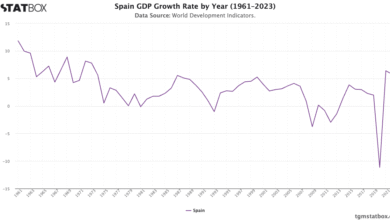Consumer Sentiment Rises Above Expectations in June 2025

Consumer sentiment is on the rise as recent data reveals a rebound that surpasses expectations, signaling a shift in how the public views the economic landscape. According to the latest University of Michigan survey, the consumer sentiment index reflected a boost to 60.5, a figure that notably exceeded the Dow Jones estimate of 54 and marked a remarkable 15.9% increase from the previous month. This shift comes as consumers adjust their inflation outlook, with the one-year projection now at 5.1%, down from prior highs. Addressing concerns about tariff impacts, findings indicate a growing optimism as fears surrounding trade policy begin to subside. The overall economic outlook is improving, albeit cautiously, as consumers face ongoing challenges in the inflation backdrop and external uncertainties.
The perception of consumer attitudes towards spending and economic stability is crucial for understanding market dynamics. Recent findings suggest a notable improvement in these attitudes as individuals recover from the initial shock of tariffs and economic policy shifts. With the University of Michigan’s comprehensive survey reflecting a considerable uptick in consumer confidence, it’s clear that worries about inflation and tariffs are not as pronounced as they once were. The decrease in the inflation outlook further supports the notion that consumers are feeling more positive about their financial situations and future purchases. As they navigate through fluctuating economic tides, insights into these changes can greatly assist businesses and policymakers alike.
Understanding Consumer Sentiment Amid Tariff Changes
Consumer sentiment plays a crucial role in shaping economic outlooks, especially amidst fluctuating tariff policies. In recent surveys conducted by the University of Michigan, consumers have exhibited a noticeable rebound in their sentiment towards the economy, reflecting a recovery from earlier tariff shocks. The latest consumer sentiment index registered at 60.5, which is significantly higher than the Dow Jones estimate of 54, illustrating an optimistic shift among consumers. This increase can be attributed to the easing trade tensions and more favorable economic expectations as consumers adjust to the recent geopolitical developments.
While this rebound is promising, it is essential to consider the underlying factors influencing consumer sentiment. The decline in the one-year inflation outlook to 5.1% marks a significant drop from previous highs, suggesting that consumers are becoming more optimistic about price stability moving forward. However, concerns remain about the long-term impacts of tariffs and global economic conditions. Sociopolitical dynamics can alter consumer perceptions rapidly, meaning that although sentiment has improved, the risks associated with tariff fluctuations and geopolitical instability continue to loom large.
Frequently Asked Questions
What is the current consumer sentiment index according to the University of Michigan survey?
As of early June, the consumer sentiment index, according to the University of Michigan survey, rebounded to 60.5. This represents a significant increase of 15.9% from the previous month, exceeding analysts’ expectations, which predicted a reading of 54.
How has the tariff impact affected consumer sentiment recently?
Recent shifts in consumer sentiment indicate a recovery from the shock of high tariffs announced earlier in the year. With ongoing negotiations and a decrease in tariff-related rhetoric, consumers have expressed a more optimistic outlook about the economy and inflation, showing less adverse response to tariff impacts.
What are consumer expectations regarding inflation based on the latest surveys?
The latest consumer sentiment surveys, including the University of Michigan’s, reveal that the one-year inflation outlook has decreased to 5.1%, marking a drop of 1.5 percentage points. Despite this improvement, inflation expectations remain elevated compared to earlier projections in 2024.
What does the economic outlook look like for consumers moving forward?
The current economic outlook for consumers appears more positive, as indicated by an increase in the future expectations measure of the consumer sentiment index by 21.9%. However, consumers still recognize potential downside risks, particularly related to ongoing tariff discussions and their possible effects on prices.
How do consumers view the inflation outlook compared to previous months?
Consumers currently view the inflation outlook with slightly less pessimism than in previous months. The one-year outlook decreased to 5.1%, signaling a shift, while the five-year outlook saw a minor decline to 4.1%. This reflects a growing sense of stability amidst tariff negotiations.
Why is consumer sentiment important for economic predictions?
Consumer sentiment is crucial for economic predictions because it reflects consumer confidence and spending habits. High consumer sentiment can indicate increased spending, which fuels economic growth, while low sentiment can suggest a reduction in consumer spending, potentially slowing the economy.
What factors are influencing the fluctuations in consumer sentiment recently?
Fluctuations in consumer sentiment have been largely influenced by changes in trade policy, particularly the impacts of tariffs, as well as evolving economic conditions. Positive developments in tariff negotiations and a moderation of threatening trade rhetoric have contributed to a more optimistic consumer outlook.
| Key Points |
|---|
| Consumer sentiment index rebounds to 60.5, exceeding Dow Jones estimate of 54, a 15.9% increase from the previous month. |
| One-year inflation outlook drops to 5.1%, a decrease of 1.5 percentage points; five-year outlook edges to 4.1%. |
| Consumer outlook improves as fears over tariffs reduce, and progress in trade negotiations is perceived. |
| Current conditions index rises by 8.1%, future expectations measure increases by 21.9%. |
| Despite improvement, all sentiment indexes are below year-ago levels due to concerns about tariff impacts on prices and geopolitical issues. |
| Federal Reserve’s expected rate cuts are influenced by current low inflation pressure despite tariff concerns. |
Summary
Consumer sentiment is showing signs of recovery as readings rebound to higher than expected levels. This positive shift in consumer sentiment reflects a gradual overcoming of tariff shock, as individuals reassess their economic outlook amid ongoing trade negotiations. The data indicates a noteworthy improvement in the economy’s perception, though long-term concerns about inflation remain prevalent. As the market stabilizes, consumer confidence could further influence economic growth and spending patterns.



